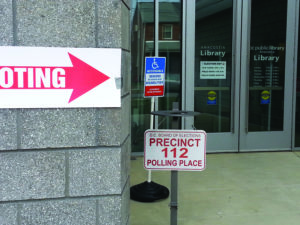
AMP | Kids is proud to partner with The Mini Page, celebrating over 50 years of providing engaging and fun learning opportunities to young readers across the country. This feature was originally syndicated in newspapers the week of June 6 – June 12, 2020. It is distributed digitally here with permission from Andrews McMeel Syndication. Enjoy and share with the young learners in your life!
The word “check” has many meanings. One of them is to limit, or stop.
The term “checks and balances” refers to the limits put on each branch of government so that one branch cannot overpower another branch.
The writers of the Constitution “checked” the powers they gave each branch of government. The writers wanted the government’s power to be “balanced,” or evenly shared, among the three branches.
They thought checks and balances would make government safe and secure. They did not want one branch to threaten our freedom.
Passing laws
For instance, the Congress approves a bill, but it can’t become a law unless the president signs it.
The president can veto, or prevent, a law if he or she doesn’t want it to pass. But Congress can override the veto by a two-thirds vote of both the Senate and the House.
 The Supreme Court might declare a law unconstitutional, even after it has passed.
The Supreme Court might declare a law unconstitutional, even after it has passed.
Voting power
The writers of the Constitution also checked the power of government by setting elections.
Members of Congress and the president are elected for limited terms. If the voters want a change, they can go to the polls and vote officials out of office.
Article II
Article II of the Constitution is about the executive branch (the president). It has four sections.
Section 1
The executive power shall be vested in a president:
- elected for a term of four years.
- there should also be a vice president chosen for the same term.
The section explains how the president and vice president will be elected. (This changed in 1804 with the 12th Amendment.)
The president will:
- be a natural-born citizen.
- be at least 35 years old.
- have lived in the United States for 14 years. If the president dies, the vice president is the successor, or replacement
Section 2
Roles and responsibilities of the president include:
- commander in chief.
- has the power to grant pardons. • with the advice and consent of Congress, makes treaties, nominates Supreme Court justices and others.
Section 3
The president will:
- give Congress information on the state of the Union.
- execute, or carry out, all laws.
- commission officers.
Section 4
The president, vice president and all civil officers of the United States can be impeached and convicted (removed from office) for treason, bribery and other crimes.
Resources:
On the Web:
National Archives: America’s Founding Documents
At the Library:
What is the Constitution? by Patricia Brennan Demuth
Teachers: For standards-based activities to accompany this feature, visit Andrews McMeel Syndication. And follow The Mini Page on Facebook!
